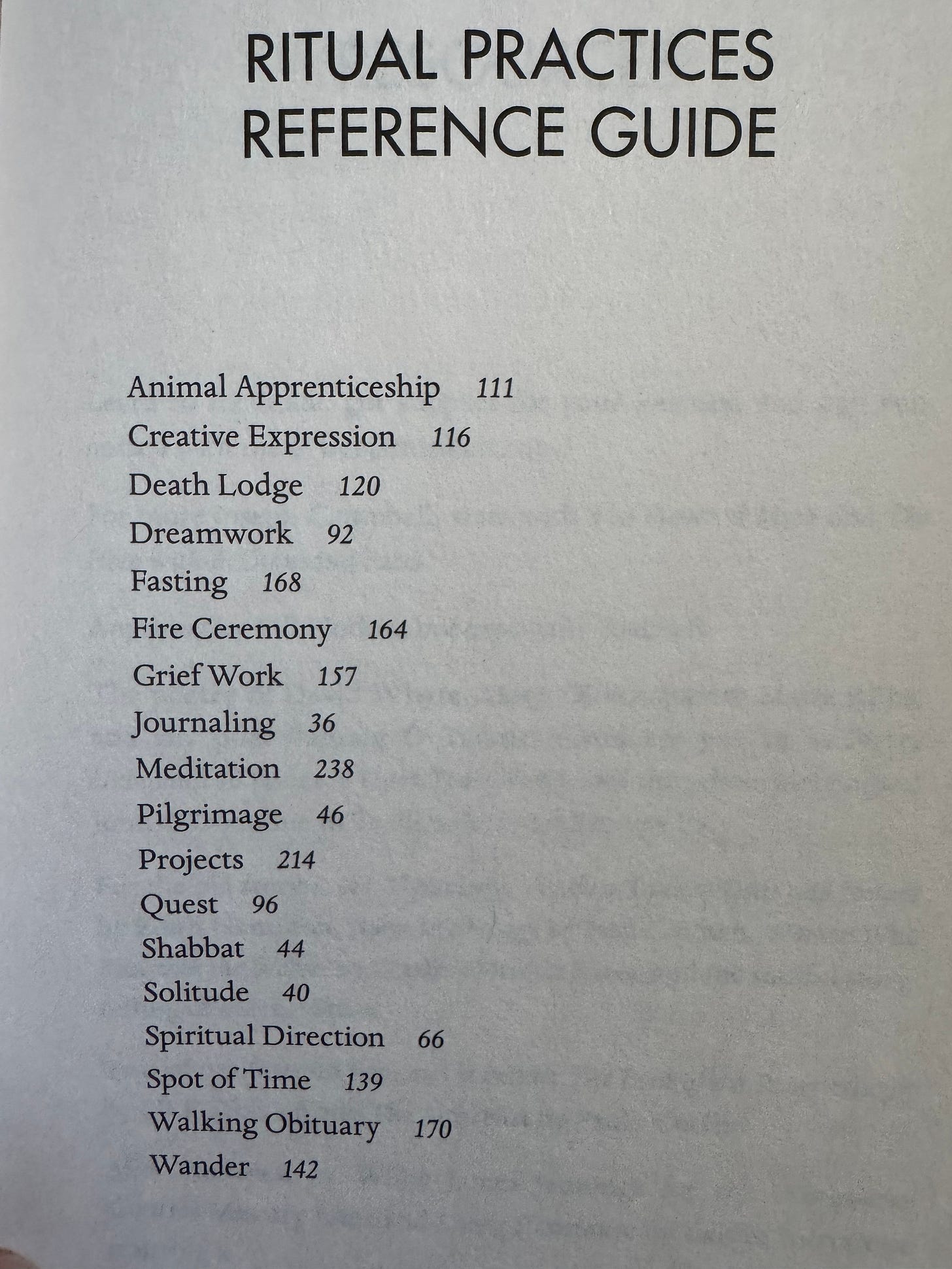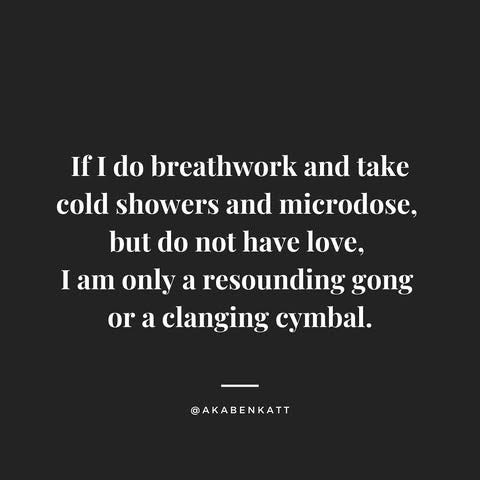Don't Mistake the Tool for the Transformation, Part 2 of 2
Five essential guideposts for your spiritual journey
Something has been stirring inside of you for a while.
You’re spiritually hungry.
You want to grow.
You’ve tried some different things, but you feel like you’re not making any progress. Or you just don’t know the next step to take.
Don’t worry, you’re not the first person to experience this.
There is a way forward.
In fact, your breakthrough is closer than realize.
In Part 1 of this article, I identified what might be interfering with your spiritual journey—the Possession-Control-Mastery paradigm (thanks, Willie James Jennings), which reduces the power of tools for transformation—the spiritual disciplines, contemplative exercises, wellbeing practices, and rituals that are meant to facilitate the process of becoming more fully human, more present, more alive.
Now let’s explore five guideposts that can help us avoid this pitfall and guide you into deep transformation.
1. Exploration
Engage a variety of practices with curiosity.
There are countless practices, so here’s the cold hard fact: You will never get acquainted with every single one of them. It’s impossible.
But you can get acquainted with some of them. This is important. Because some tools will be a better fit for who you are. And some modalities will be more impactful during different seasons of your life.
The key, then, is to allow yourself to explore the menu. Notice what attracts your attention. If something keeps showing up on your radar, get curious and look into it. If people you trust testify to the benefits of a practice, check it out.
But, also, be aware: in our influencer-saturated era, practices can be presented in a manipulative way to get your business. So if the presentation of the tool leaves you feeling small, insufficient, or lacking, it’s praying on the insecurities of the false self. You probably should look somewhere else—or at least to another teacher.
If you’re wondering where to start your exploration, here’s my list from The Way Home of practices I engaged during my soul quest: Animal Apprenticeship, Creative Expression, Death Lodge, Dreamwork, Fasting, Fire Ceremony, Grief Work, Journaling, Meditation, Pilgrimage, Projects, Quest, Shabbat, Solitude, Spiritual Direction, Spot of Time, Walking Obituary, Wander (Note: of course this list is not comprehensive!).
Finally, remember, allowing yourself to explore also means embracing a beginner’s mindset.
2. Dedication
Commit to a core set of practices.
Endless exploration (consumption) is kept in check by dedication. After identifying practices with which you find resonance, commit.
While some tools may be a one-off experience (e.g., a plant-medicine ceremony), remember that many of them are just like any endeavor—public speaking, sports, playing an instrument—it takes practice to unlock your fullest capability. If you want to experience the benefits, you’ve got to build a habit.
Identify what your anchor practices are. And stick to them.
I recommend keeping your core practices simple. The good news is that some of the simplest tools are not only the most sustainable to practice, but also the most powerful—such as the foundational practices we implement in my Journey Within coaching program—reflective journaling, meditation, and rewilding (intentional time in nature).
There’s another reason that dedication is important: Endless exploration can stunt our growth and turn into a form of outsourcing our inner work. I’ve seen this a lot. When people rotate between this tarot reading and those crystals, that psychic and these podcasts, they start to drown out access to the inner knowing—intuitive perception—that they are actually trying to cultivate. It’s a kind of spiritual advice shopping. Instead of becoming more attuned to what my teacher Thom Knoles calls “the fine level of feeling”—a nudge in this direction, a tug towards this person, a hint of the next step—people end up back in their heads and try to get supposed clarity or confirmation from a million different modalities.
Dedication to a core of collection of practices strengthens our capacity to notice and trust the subtle cues that come our way.
3. Orientation
Embrace a posture of gracious receptivity.
What orientation do we take towards the tools of transformation?
What is our posture—not only as it relates to the tools, but the entire spiritual journey?
As I mentioned in my recent article, How Your Terrifying Transition Is Actually Your Path to Transformation, it is tempting (especially for achievers!) to show up to the spiritual journey with the same hustle and hard work they bring to every other area of their lives. But both the tools and the terrain of transformation call for a different orientation.
If your intent is to experience transformation, then your orientation must shift from productivity to presence, from striving to stillness, from achievement to acceptance. Embracing an orientation of grace is critical to ensure that you aren’t just accumulating information but surrendering to transformation.
Show up. Go all in. But, also, surrender to the pace of nature. This is where the magic happens.
4. Reflection
Immerse yourself in compassionate community.
Certainly the journey involves a lot of inner reflection. But outer reflection is also essential—having the container of community to hold up a mirror to us so we can see the masks we’re wearing, admit they exist, identify their role, and begin and sustain the long, slow excruciating removal process so we can reclaim the true self.
Attempting to travel the path of transformation without support makes one extremely susceptible to the Possession-Control-Mastery paradigm. The isolated individual is prone to accumulating knowledge and tools for external power.
Fortunately, helpful, healing companionship comes in a variety of forms, as I describe in The Way Home:
Trusted friend. Neighbor. Lover. Or a more formal role, like an AA sponsor or a paid professional such as a therapist or spiritual director. It also can come in a communal form, like a spiritual congregation or small group, a band of brothers or a sisterhood.
Additionally, here are a few other types of containers for transformation that I’ve been paying attention to lately:
Children. Yes, cold plunges, breathwork, and psychedelics are potent tools, but have you tried parenting?! I love how legendary mindfulness teacher Jon Kabat-Zinn puts it: “No matter how severe the monastery and how arduous the particular practices associated with it, living with children is probably the most powerful spiritual practice that anybody could ever be engaged in if you open yourself to it that way.”
Wisdom Schools. Wisdom schools are networks for spiritual transformation. As
Andrew Murray Dunn puts it in the article below, wisdom schools support high-agency leaders “in developing the awareness and capacities to live, work, and create with greater harmony with the web of life.”
Modern Elder Academy. If you’ve been around this newsletter, you’ve heard me mention this before. MEA is a wisdom school specifically focused on equipping people in midlife with tools, practices, and support to navigate midlife challenges and thrive in the second half of life. By the way, if you are interested in experiencing this container, I invite you to join me this October at MEA’s Baja campus for my “Discovering the Hero’s Journey in Midlife” workshop.
5. Integration
Be transformed by the tools!
This is what it’s all about!
Yes, the journey of transformation is for you, by you―or at least that’s where it begins. But it really is about what happens in you and through you. Growing spiritually or expanding your consciousness or however you want to put it is all about becoming a more generative, loving presence in the world.
And if this isn’t the result after all the cacao and ketamine and cold plunges and dreamwork and retreats―and, yes, even my favorite tool, meditation―nothing much has really happened! You’re still in your head, not your heart.
In other words, remixing the ancient passage from 1 Corinthians I shared above:
If I do breathwork and take cold showers and microdose, but do not have love, I am only a resounding gong or a clanging cymbal.
If I meditate twice a day, but do not have love, I am nothing.
If I do intermittent fasting and listen to podcasts about biohacking and tell everyone about it, but do not have love, I gain nothing.
It’s an ancient truth: Don’t mistake the tool for the transformation.
You’re cheating yourself and others if you put all of this time into practices in an effort to just improve the external details of your life.
Don’t get hung up on an obsession with tools.
Instead, be transformed…
Whatever the method is, it is just the beginning.
Let it reconnect you with your heart.
Let it heal you.
Let it guide you into love and service.
Love is patient, love is kind. It does not envy, it does not boast, it is not proud. It does not dishonor others, it is not self-seeking, it is not easily angered, it keeps no record of wrongs. 6 Love does not delight in evil but rejoices with the truth. It always protects, always trusts, always hopes, always perseveres.
Love never fails. But where there are prophecies, they will cease; where there are tongues, they will be stilled; where there is knowledge, it will pass away.
-1 Corinthians 13:4-8







